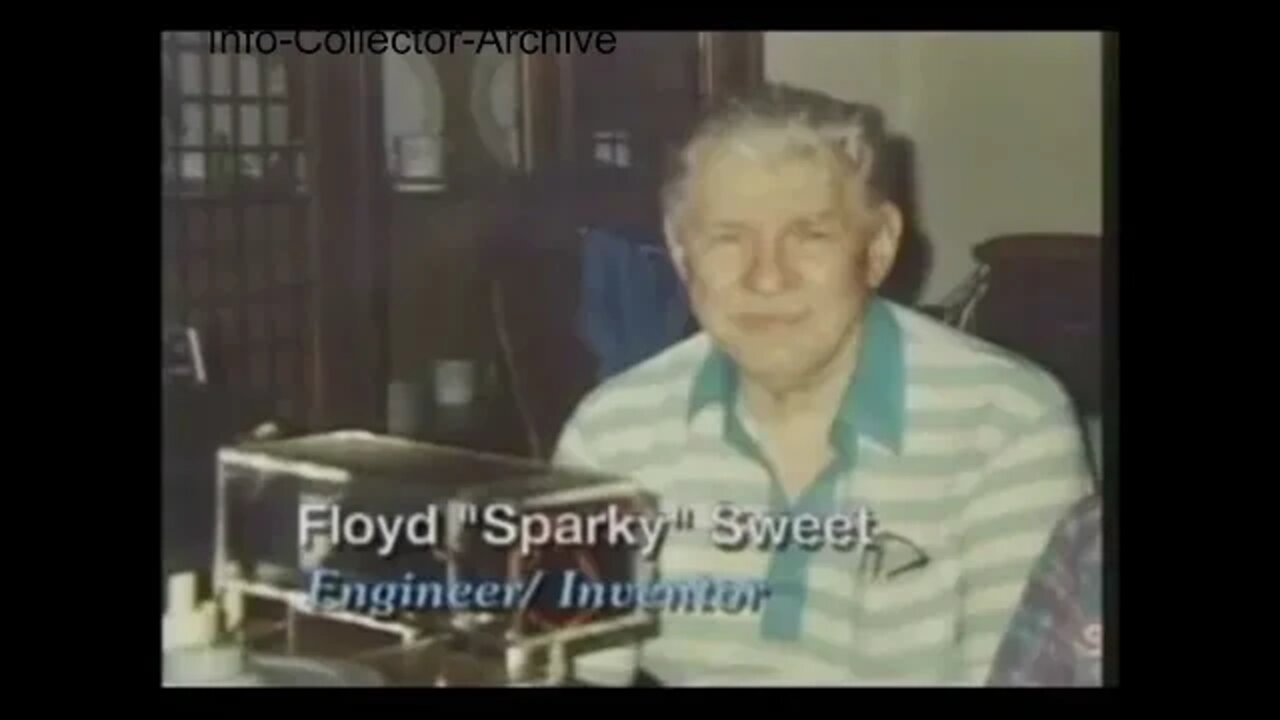Premium Only Content

Floyd "Sparky" Sweet - Amplifier Free Energy
"There is suppression launched against any free-energy inventor who
succeeds or is very close to succeeding." - Ret. Lt. Col. Thomas
Bearden
The late Floyd "Sparky" Sweet created a breakthrough magnetic
solid-state energy generator. For complex reasons, he did not develop
his device into a commercially viable product. However, as a magnetics
specialist with a distinguished industrial career, Sweet was not a man
whose technical claims could be easily dismissed by critics.
Sweet's story is important for three reasons. First, creditable
witnesses saw his invention convert the invisible energy of space into
useable amounts of electric power without fuel, batteries, or
connection to an outlet. Second, he was subjected to the same kinds of
harassment that the inventors we met in Part I had to face, including
threats on his life. Third, and most important, Sweet's research has
inspired the work of other space-energy inventors, some of whom may
well produce a useful stationary-magn et device.
FLOYD SWEET AND MAGNETS
Floyd Sweet (1912-1995) grew up in Connecticut, in an era when radios
were home-built crystal sets. At the age of nine, his intense interest
in how things work was directed into building and disassembling radios
and other electrical apparatus, such as a small Tesla coil (see
Chapter 2) energized by a Model T spark plug.
When Sweet was eighteen, a family friend helped him find work at the
nearby General Electric plant while he went to college. He got the
nickname "Sparky" after he Disconnected some wires one day, which
resulted in an instrument exploding in a spectacular spray of sparks.
Despite this incident, his employers were pleased with his work
especially his intuitive gift for coming up with answers to electrical
problems.
Sweet stayed with GE after completing his education. He worked in the
company's Schenectady, New York, research and development center from
1957 to 1962 a dream job in which he could use a well equipped
laboratory to follow his hunches on intriguing magnetics projects.
That line of research fascinated him. In 1969, he obtained a master's
degree from the Massachusetts Institute of Technology.
By the mid-1970s, Sweet and his wife, Rose, had moved to the Los
Angeles area to enjoy semiretirement. Besides serving as one of GE's
preferred consultants, Sweet designed electric equipment for other
customers.
Floyd Sweet was more than a professional scientist who worked with
magnets. He had a passion for magnetism, and for the concept that the
entire universe is permeated with a magnetic field. Once he fully
retired in the early 1980s, he would have happily spent many hours
each day building a device that could tap into the energy of that
magnetic field. But Rose fell ill, and was an invalid for the last
seven years of her life. This demanded Floyd's attention and forced
him to dip into their savings. He also ha d to cope with his own ill
health, including a period of near blindness. Despite these problems,
he worked on his device when not preparing meals and tending to his
wife's needs.
SWEET'S VACUUM TRIODE AMPLIFIER: DEFYING CONVENTION
For decades, new-energy researchers talked about the possibility of
treating a magnet so that its magnetic field would continuously shake
or vibrate. On rare occasions, Sweet saw this effect, called
self-oscillation, occur in electric transformers. He felt it could be
coaxed into doing something useful, such as producing energy. Sweet
thought that if he could find the precise way to shake or disturb a
magnet's force field, the field would continue to shake by itself. It
would be similar to striking a bell a nd having the bell keep on
ringing.
-
 UPCOMING
UPCOMING
Candace Show Podcast
32 minutes agoTrump Drops "F" Bombs On Israel | Candace Ep 205
-
 LIVE
LIVE
vivafrei
3 hours agoDid Trump Secure a Cease-Fire Between Israel and Iran? Update on the Canadian Ostrich Farm AND MORE!
11,594 watching -
 1:16:08
1:16:08
Awaken With JP
1 hour agoThey Know What The F*CK They're Doing - LIES Ep 97
12.8K4 -
 LIVE
LIVE
The Quartering
3 hours agoYoutuber Takes Her Own Life Over Harassment, Why Women Are Single, Trans Creep Faces JAIL & More
7,904 watching -
 LIVE
LIVE
The HotSeat
51 minutes agoTrump Keeps Winning — They Keep Whining While America Rises
472 watching -
 LIVE
LIVE
StoneMountain64
2 hours agoCasuals > Ranked ... I said it
488 watching -
 LIVE
LIVE
Barry Cunningham
3 hours agoPRESIDENT TRUMP IS ANGRY TODAY! CEASEFIRE IS BACK ON AND OTHER NEWS!
1,547 watching -
 1:39:42
1:39:42
Winston Marshall
2 hours agoHistorian Reveals Why Peace Has Been Impossible: Israel & Iran w/ Dr Benny Morris
21K7 -
 LIVE
LIVE
China Uncensored
1 hour agoThe REAL Reason Trump Bombed Iran
75 watching -
![[Ep 695] Cuomo vs. a Muslim Communist | War Powers & the Constitution | Sam Anthony [your]NEWS](https://1a-1791.com/video/fww1/2c/s8/1/P/Z/s/W/PZsWy.0kob.1-small-Ep-695-Cuomo-vs.-a-Muslim-C.jpg) UPCOMING
UPCOMING
The Nunn Report - w/ Dan Nunn
54 minutes ago[Ep 695] Cuomo vs. a Muslim Communist | War Powers & the Constitution | Sam Anthony [your]NEWS
15